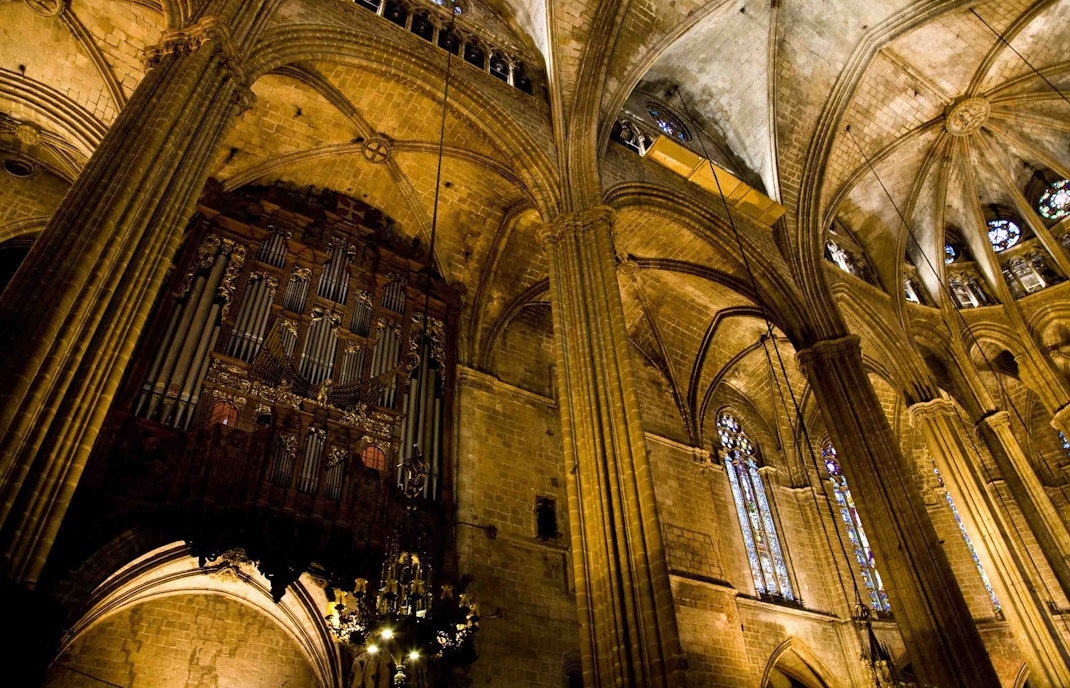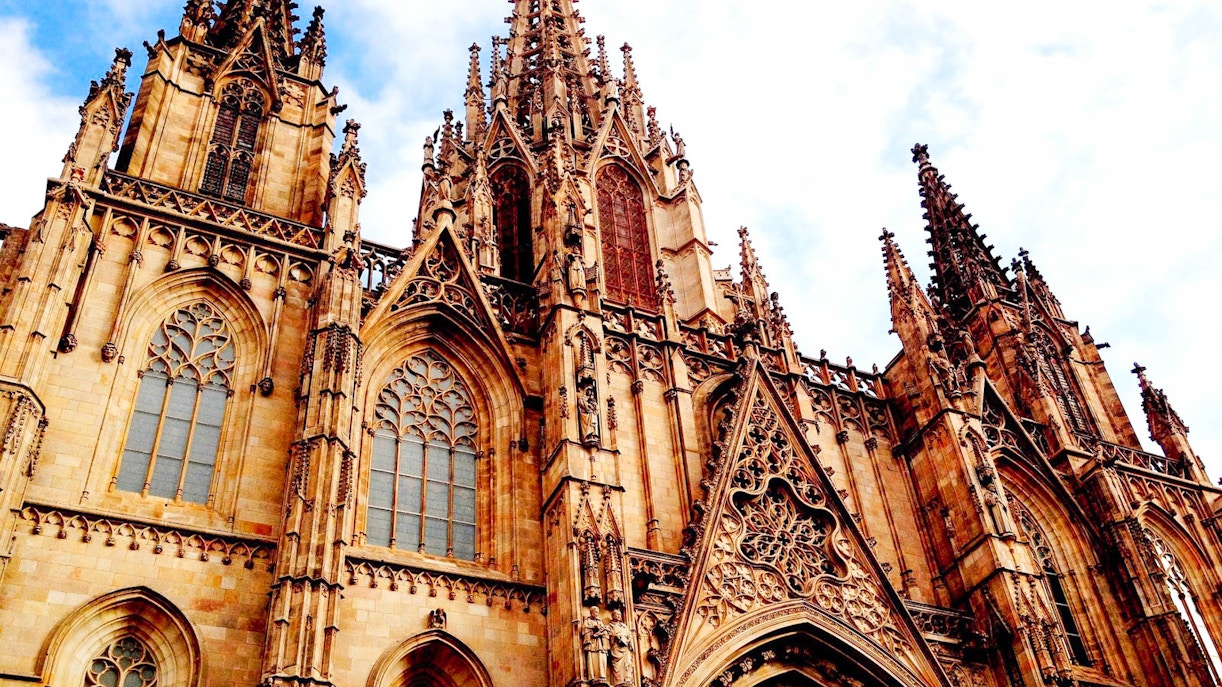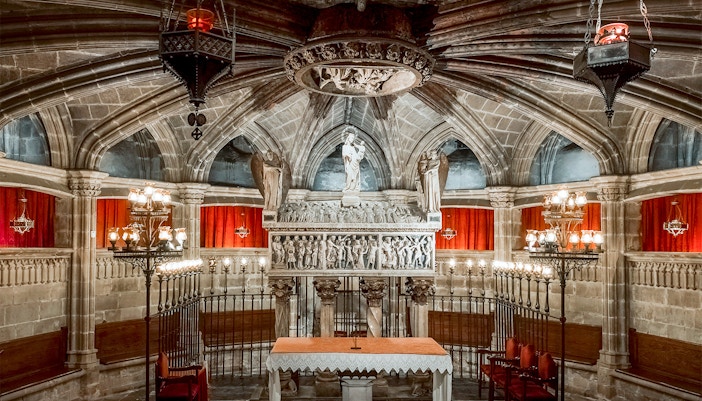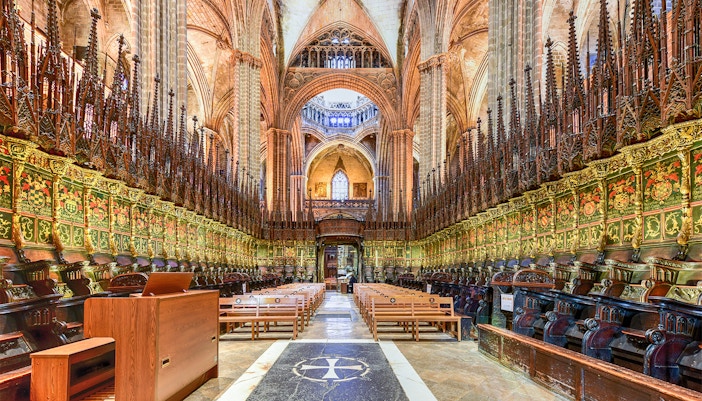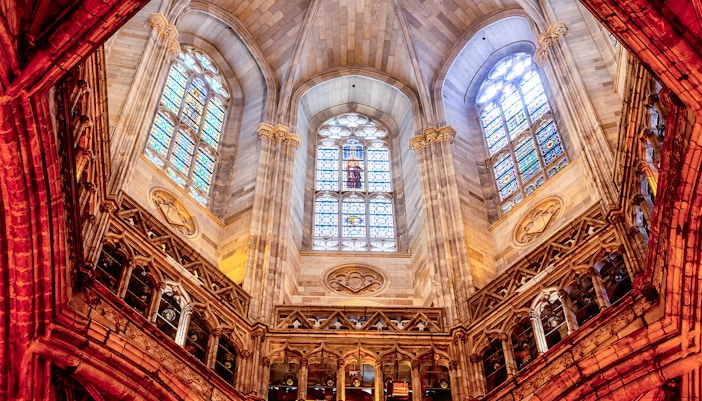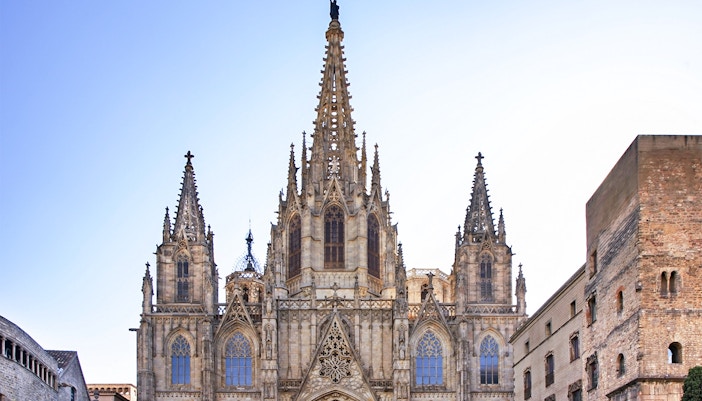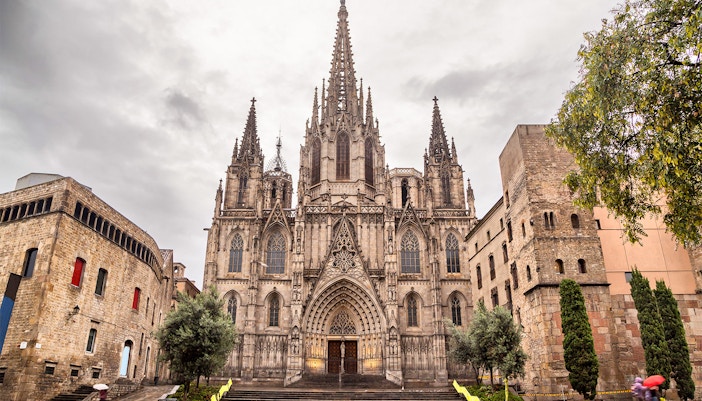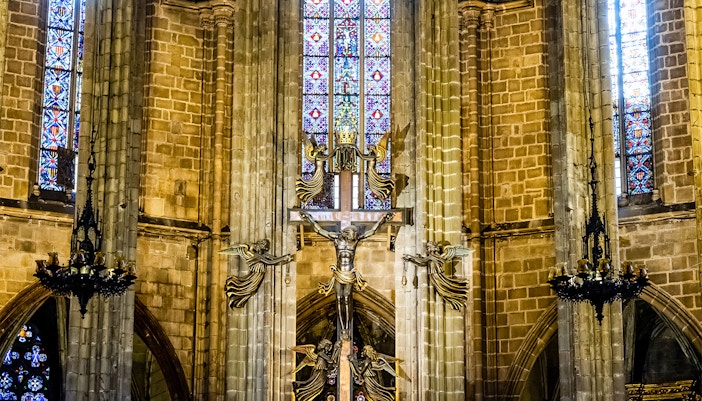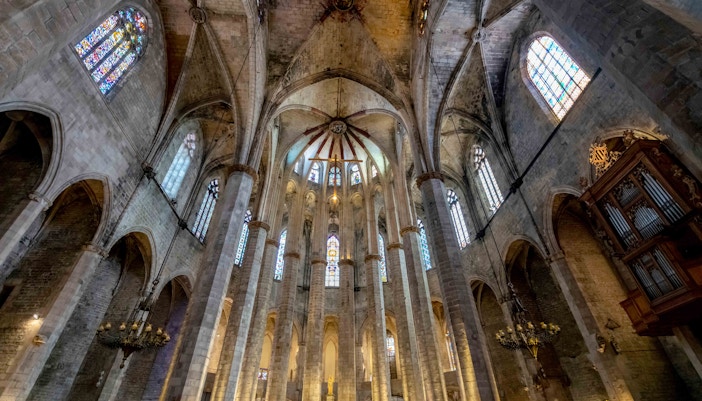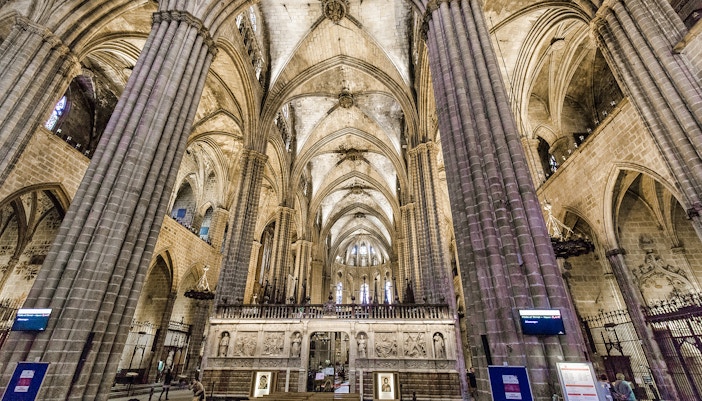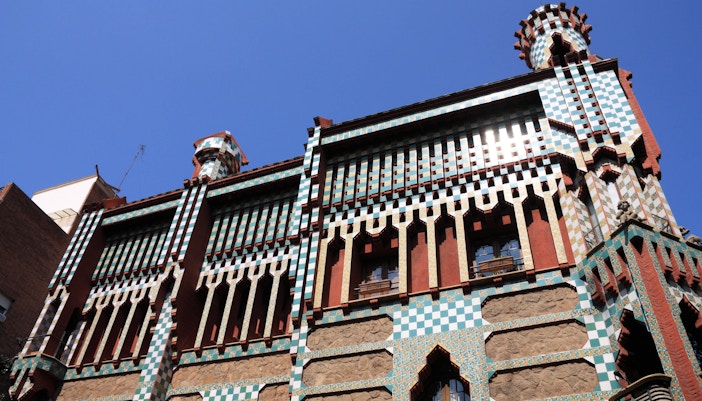Inside the chapels of Barcelona Cathedral are many Gothic paintings that form altarpieces. Some noteworthy artists involved were Guerau Gener, Gabriel Alemany, Bernat Martorell, Lluis Borrassà, to name a few. One such masterpiece is by Bernat Martorell called the 'Altarpiece of Transfiguration'. It shows a series of paintings including Christ on a crucifix surrounded by his followers as well as his resurrection. The museum of the Cathedral also houses an exquisite collection of paintings by artists like Jaume Huguet, Pere Destorrents, and Bartolomé Bermejo, who created the masterpiece, 'The Pieta', a powerful piece showing Mary holding the body of Christ after his crucifixion.
What to see at Barcelona Cathedral

Paintings
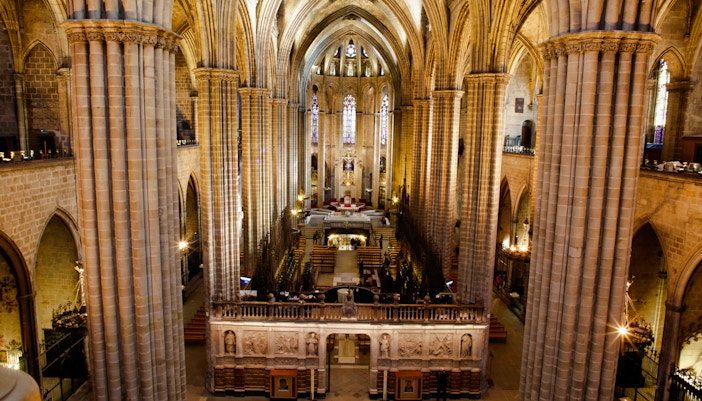
Heart chair
The chairs or the choir are located in the heart of the Cathedral and date back to the 14th and 15th centuries. On the backs of the seats, there are images of the Order of the Golden Fleece from the 16th century, forming the coat of arms. Another highlight of the choir is the pulpit or high chair created between 1394 and 1499 by Pere Canglada and Maties Bonafė along with John Lambert and Anthony Claperós. The pinnacle canopies around the choir were created by Kassel and Michael Lochner, both commendable artists from their time. Finally, you will notice the retrochoir, which is closed off by a marble wall. On the wall are reliefs created by Bartolomė Ordóñez and Pedro Villar.
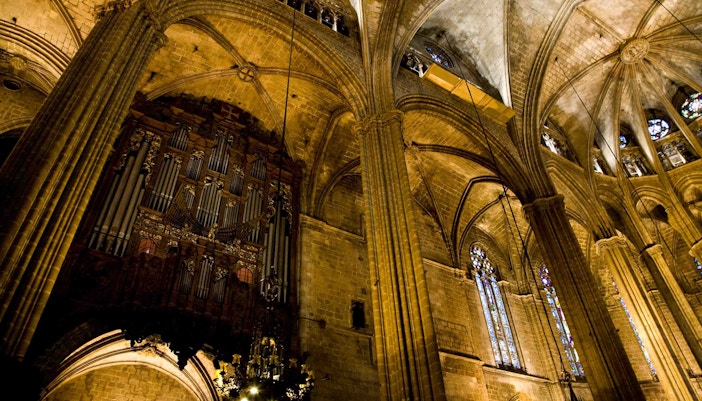
Stained windows
Stained-glass windows in the cathedral have 3 panels, where the central panel displays an image of one main character, while the side panels contain geometric designs symbolizing royal families of the city, angels, etc. The windows can be divided into 4 periods. The earliest from the years 1317 to 1334 is shown by a figure of Bishop Ponc de Gualba along with the Holy Cross and Saint Eulalia. The second period was around 1400 as depicted by Saint Andrew surrounded by other significant individuals of the time. The third period is from the 15th century and forms the most important window representing Saint Michael and Noli me tangere. Finally, we have windows from the 19th and 20th centuries, forming part of the sidewalls and the facade.
